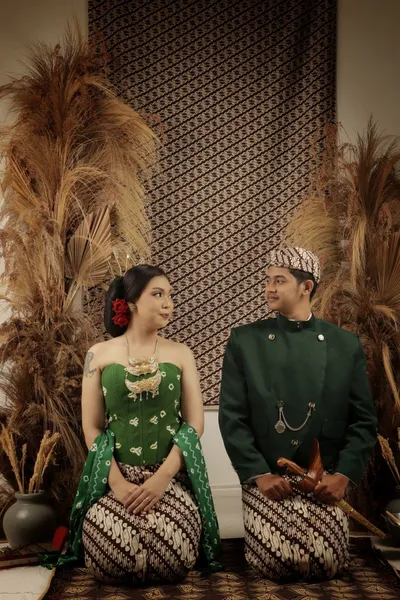As an archipelagic nation rich in culture, Indonesia has a remarkable cultural legacy, including the batik art form. The cloth art form of batik has gained worldwide prominence and evolved into an iconic part of Indonesian culture. Painting is not only a work of art, but also a tradition that has been handed down through the generations.
Let’s explore more about the importance of batik as an art and tradition in Indonesia.
Batik as an Art Expression
 :
:
Batik art emerged from the idea of Javanese art, which was considered beautiful and high. The art of batik craft in Indonesia is closely related to the social traditions of society. The word “batik” itself comes from Javanese, which means writing and dots, referring to patterned cloth made with wax to prevent dyes from entering.
The word “batik,” which derives from the root word “tik,” which describes beautiful, soft, and little work that reflects beauty, is always thought of as a patterned fabric during the production process. Batik derives its name from the process of pouring wax with canting, creating a pattern of lines and dots.
Batik and Its Philosophy

As an artistic medium, batik conveys the emotions and ideas of its creators towards their surroundings. In addition to being a physical craft, batik-making, particularly writing batik, has a spiritual component that includes lessons, prayers, and hopes. Written batik enables one to investigate life’s “fibers” and connect them to practical realities. This adds a magical touch to exquisite, highly prized traditional batik products, expressing the nation of Indonesia’s rich symbolic heritage.
Traditional batik crafts, as works of art, use motifs, patterns, and embellishments with ethereal and symbolic meaning to highlight design elements like proportion, color, and line. Some people view batik as a piece of art with deep symbolic value. In batik, the ornamental patterns convey the painter’s message and develop into comprehensive symbols that convey further messages to the following generation.
Batik as a Part of Culture and Tradition

Beyond just being an artistic medium, batik holds great cultural significance. As a reflection of the cultural richness of the nation, several Indonesian regions have their own unique Batik designs and styles. In many customary and religious occasions, including marriages, births, and funerals, batik is frequently utilized. For Indonesians, it plays a significant role in their everyday life.
As a component of Indonesia’s evolving culture, batik features a wide range of patterns. Considerable numbers of batik motifs are traditional patterns that originated in different parts of the world and have links to other components that are typical of that particular region’s batik. The development of batik patterns can enhance the aesthetic and economic worth of the material itself, as they are not static.
Indonesian batik patterns vary depending on the locale. For instance, the patterns of batiks from Solo and Yogyakarta could differ. Many times, these patterns have historical and cultural importance of their own. The Batik pattern is easily recognizable to Indonesians, who can frequently tell where it originated simply by glancing at it.
Conclusion
Batik is not just an artistic medium but also a deeply symbolic and historical legacy. Thus, batik is a precious Indonesian treasure that needs to be conserved because of its intricate manufacturing method and the cultural elements it contains. It is also a distinctive textile art form that is ever-evolving and has a significant cultural impact in Indonesia.
That is the importance of batik as an art and tradition. Read more about batik on the Indonesia Batik Fabric page.
